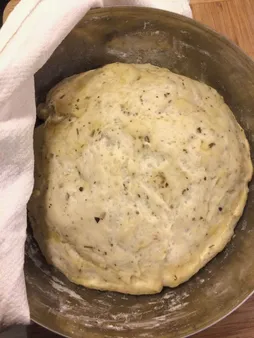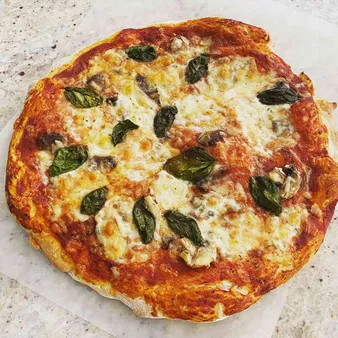Table of Contents
Ever dreamed of crafting a delicious pizza from scratch, right in your own kitchen? Well, you're in for a treat! Baking pizza at home is a fun and rewarding experience, and with the right knowledge, you can achieve restaurant-quality results. The key to a truly amazing pizza lies in the temperature. While commercial pizza ovens reach scorching temperatures, home ovens have their limitations. But don't worry, with the right techniques, tools, and a little know-how, you can create a crispy, golden-brown crust that will make your taste buds sing! tauhuichiban will guide you through the process, sharing tips and tricks to help you master the art of baking pizza at home. So grab your ingredients, get ready to knead, and let's embark on this delicious journey together!
Key Takeaway | Description |
|---|---|
Ideal Oven Temperature | Aim for 475°F to 500°F for the best results. |
Pizza Stone or Steel | Essential for heat distribution and a crispy crust. |
Preheating Time | Preheating your oven and pizza stone for at least 45 minutes is crucial. |
Dough Preparation | Use bread flour for a crispier crust, and let the dough rise properly. |
Baking Time | Bake for approximately 10 to 15 minutes, depending on the size of your pizza. |

The Perfect Pizza Temperature: How Hot To Bake At Home
Getting the Right Temperature to Bake Pizza at Home
When it comes to baking pizza at home, the temperature is the most critical factor in achieving that perfect crust. Think of it like a delicate dance between heat and dough - get it right, and you'll be rewarded with a crispy, golden-brown masterpiece. Get it wrong, and you'll end up with a soggy, flavorless mess.
The Importance of Accurate Temperature
Most commercial pizza ovens can reach scorching temperatures of over 900°F, but home ovens have their limitations. The ideal temperature for baking pizza at home is between 475°F to 500°F, which allows for a crispy crust without overcooking the toppings. To ensure accurate temperature, invest in an oven thermometer - it's a game-changer!
Oven Type | Ideal Temperature |
|---|---|
Commercial Pizza Oven | 900°F+ |
Home Oven | 475°F - 500°F |
Preheating: The Key to Success
Preheating your oven and pizza stone is crucial for achieving that perfect crust. Aim to preheat for at least 45 minutes to ensure the stone reaches the desired temperature. This will help transfer heat evenly and prevent the crust from becoming soggy.
- Preheat oven to 475°F - 500°F
- Preheat pizza stone for at least 45 minutes

Getting the Right Temperature to Bake Pizza at Home
The Secret to a Perfect Crust: Understanding Oven Dynamics
Oven Temperature vs. Actual Temperature
When it comes to baking pizza at home, it's essential to understand that the temperature you set on your oven isn't always the temperature you get. This is because home ovens can have hotspots and temperature fluctuations, which can affect the cooking process.
Think of it like a thermometer in a doctor's office - just because the thermometer says your temperature is 98.6°F, it doesn't mean you're not running a fever. Similarly, just because your oven says it's at 475°F, it doesn't mean the internal temperature is the same.
Oven Type | Temperature Accuracy |
|---|---|
Commercial Pizza Oven | Highly Accurate |
Home Oven | May Vary |
The Importance of Oven Thermometers
So, how do you ensure your oven is at the right temperature? The answer is simple: invest in an oven thermometer. These handy devices can give you an accurate reading of your oven's internal temperature, helping you achieve that perfect crust.
Think of an oven thermometer like a referee in a soccer game - it ensures everyone is playing by the same rules. With an oven thermometer, you can adjust your cooking time and temperature to get the best results.
- Invest in an oven thermometer for accurate temperature readings
- Adjust cooking time and temperature based on thermometer readings

The Secret to a Perfect Crust: Understanding Oven Dynamics
Mastering the Art of Homemade Pizza: Tips and Techniques
Making pizza at home is like being a magician - you get to create something amazing out of simple ingredients! One trick I learned is to use bread flour for a crispier crust, but all-purpose flour works too. And remember, don't rush the dough - let it rise properly for better flavor and texture. Another tip is to precook raw toppings like meat or certain veggies, so they're fully cooked on your pizza.
- Use bread flour for a crispier crust (or all-purpose flour)
- Let the dough rise properly for better flavor and texture
- Precook raw toppings like meat or certain veggies

Mastering the Art of Homemade Pizza: Tips and Techniques
Final Thought
Baking pizza at home is a delightful journey that allows you to experiment with flavors and create a masterpiece from scratch. Whether you're a seasoned pizza pro or a first-time baker, remember that the right temperature is key to achieving a crispy, flavorful crust. With the right tools, techniques, and a little patience, you can transform your kitchen into a pizza haven. So, fire up your oven, gather your ingredients, and enjoy the satisfaction of crafting your own delicious pizzas!